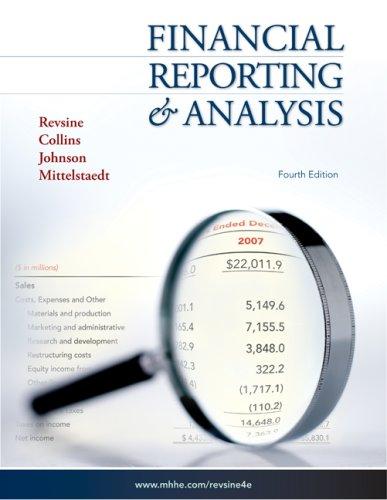The disclosure rules for business combinations complicate financial analysis. Trend analysis becomes difficult because comparative financial statements
Question:
The disclosure rules for business combinations complicate financial analysis. Trend analysis becomes difficult because comparative financial statements are not retroactively adjusted to include data for the acquired company for periods prior to the acquisition.
For example, consider Shopko’s acquisition of Pamida on July 6, 1999. Excerpts from Shopkos 1999 annual report highlight the revenue and earnings growth achieved in that year. In the president's letter, William Podany noted the following:
For more than ten consecutive years we have achieved new records for revenues and this year we are pleased to report another year of record earnings.
The management's discussion and analysis (MD&A) section began with the following statement:
Consolidated net sales for fiscal 1999 (52 weeks) increased \($939.5\) million or 31.8% over fiscal 1998 weeks (52 weeks) to \($3,898.1\) million.
The details of the acquisition were disclosed in the following note in Shopko’s 1999 annual report:
On July 6, 1999, the Company acquired all of the outstanding voting and nonvoting common stock of Pamida for \($94.0\) million in cash, \($285.8\) million in assumed debt and \($138.6\) million in assumed trade and other accrued liabilities. Pamida is a retail chain headquartered in Omaha, Nebraska, operating Pamida retail stores in 15 Midwest, North Central and Rocky Mountain states. In connection with the Pamida acquisition, the Company incurred special charges of \($8.1\) million for employee retention programs, elimination of administrative functions and various integration initiatives. The allocation of the purchase price of Pamida was based on estimated fair values at the date of acquisition.
This acquisition was accounted for under the purchase method of accounting and the allocation of the purchase price was based on fair values at the date of acquisition. Goodwill associated with the Pamida acquisition of approximately \($186.6\) million is being amortized on a straight-line basis over 40 years. The results of operations since the dates of acquisition have been included in the consolidated statements of earnings.
The following presents selected unaudited pro forma consolidated statement of earnings information that has been prepared assuming the Pamida acquisition occurred on January 31, 1999 and February 1, 1998, respectively:


Required:
1. How should a financial statement user interpret the reference to 31.8% sales growth in the MD&aA section?
2. Suppose you are asked to prepare a sales forecast for the year ended February 3, 2001. Based on the information shown here, what is the best estimate of Shopkos sustainable growth in sales between the years ended January 30, 1999 and January 29, 2000? Explain your answer.
Step by Step Answer:






